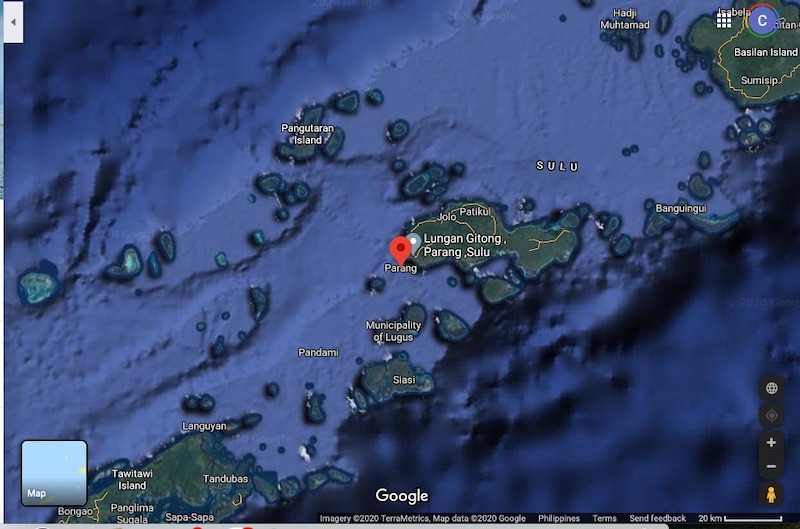 Courtesy of Google Maps
Courtesy of Google Maps
COTABATO CITY (MindaNews / 14 October) – The ASEAN Center for Biodiversity (ACB) has called for a stronger cooperation for the protection of the Tubbataha Reefs Natural Park (Tubbataha Reefs), a “hidden gem” in the middle of the Sulu Sea, not just because of its pristine coral reefs but also because of its role as a major bird migratory flyway.
Dr. Theresa Mundita Lim, ACB executive director, made the appeal during the first National Seabird Forum and Action Planning Workshop organized by the Tubbataha Reefs management team and the Department of Environment and Natural Resources held virtually on Wednesday.
“Tubbataha Reefs Natural Park is a pride of the ASEAN region, being a designated ASEAN Heritage Park apart from serving as home to a high density of coral and marine species and the last known great seabird sanctuary in the Philippines,” she said in her remarks.
Tubbataha Reefs is a protected seascape and was declared by the United Nations Educational, Scientific and Cultural Organization (UNESCO) as a World Heritage Site in 1993.
A seabird monitoring and research, a key tool in determining the welfare of seabirds and their unique needs for conservation, was launched in Tubbataha Reefs with the support of the Japan-ASEAN Integration Fund.
ASEAN stands for the Association of Southeast Asian Nations composed of Brunei Darussalam, Cambodia, Indonesia, Laos, Malaysia, Myanmar, Philippines, Singapore, Thailand and Vietnam.
East Timor belongs to Southeast Asia but its application for membership in the regional grouping remains pending.
In the ASEAN region, 70 migratory bird species out of 510 have been listed by the International Union for the Conservation of Nature or IUCN as critically endangered, endangered, vulnerable and near threatened, Lim said.
Peter Ryan, director of Fitzpatrick Institute of African Ornithology at the University of Cape Town, said in a study that about 40 percent of seabirds have consumed plastic wastes, which can kill them or, more likely, cause severe injuries.
Losing the birds of the sea means “losing our ecological connectors, those that connect remote island ecosystems to larger ecological networks,” Lim said.
She noted that ASEAN has a huge contribution to the world’s overall biodiversity, being at the center of the East-Asian Australasian Flyway, which is home to over 50 million migratory birds.
Considering the need for stronger regional collaboration among ASEAN Member States, flyway site managers, and partners from local, national, and international organizations, Lim said the ASEAN Flyway Network was created, primarily to help improve knowledge, increase capacity, and enhance communication on wetlands and migratory birds in the region.
Through the ASEAN Flyway Network and the ASEAN Heritage Parks (AHP) Programme, the ASEAN Member States and the ACB are working together to protect and manage the ecosystems that serve as important feeding and watering sites of migratory birds, such as Tubbataha Reefs, she said.
The Philippines has developed a five-year conservation plan for Philippine birds, which, according to Lim, is a major boost to the ASEAN Flyway Network and to the flyway-scale conservation. (Bong S. Sarmiento / MindaNews)
